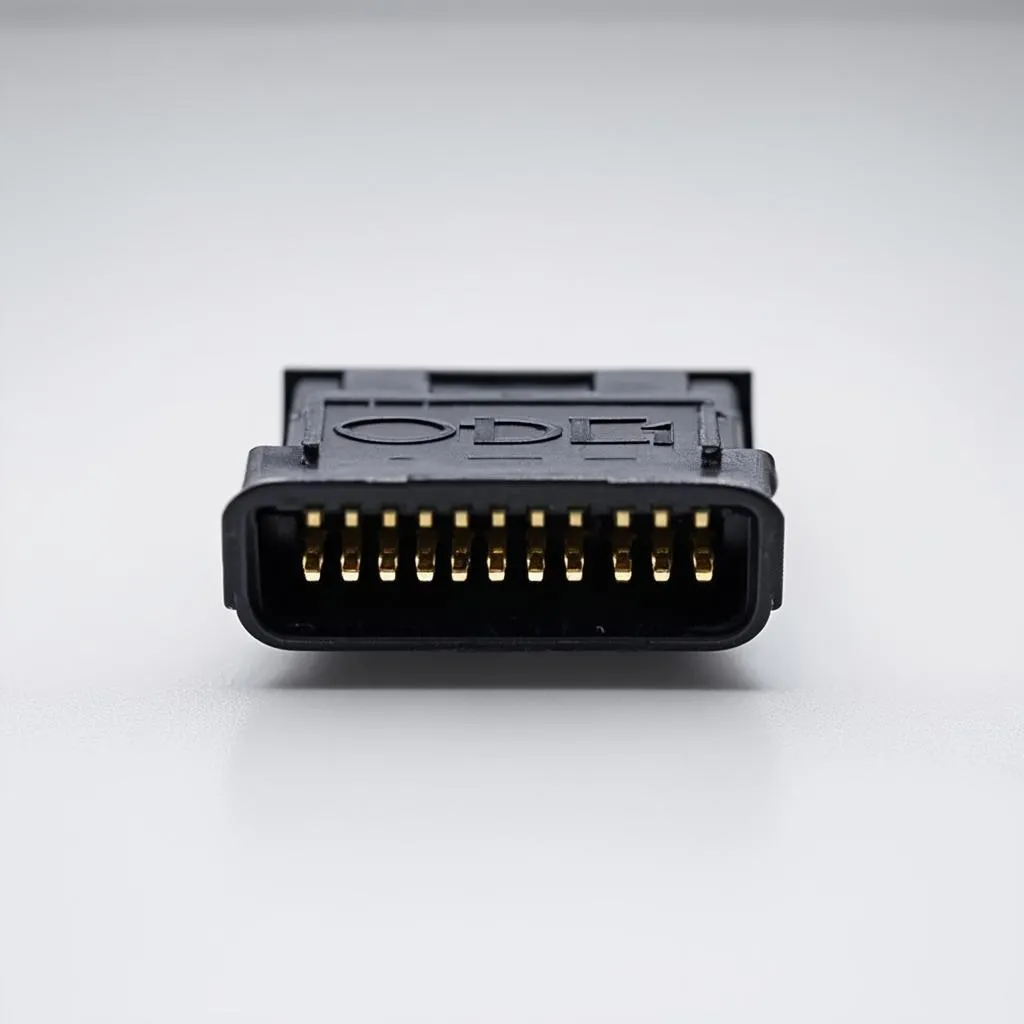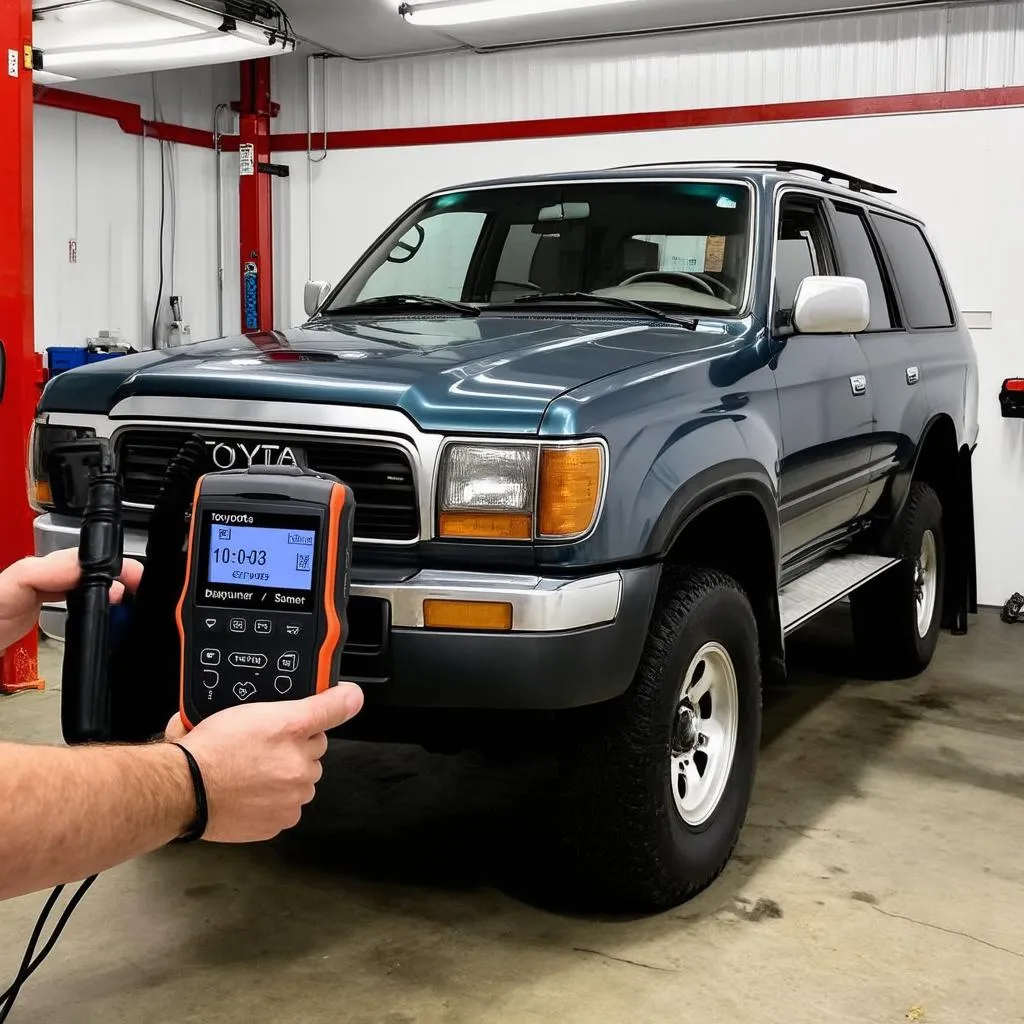“My mechanic said my ’95 4Runner needs an engine diagnosis, but he isn’t sure what kind of connector it uses.” Sound familiar? You’re not alone! Many 1995 Toyota 4Runner owners grapple with this OBD1 vs. OBD2 dilemma. This often leaves them feeling like they’re stuck between a rock and a hard place – especially when facing those pesky “Check Engine” lights.
Decoding the Mystery: What Does Your 4Runner Have?
The answer lies within your 4Runner’s manufacturing date. Think of it like a cosmic dividing line:
- Manufactured before August 1995: Your 4Runner likely has the OBD1 system, a pioneer in automotive diagnostics but with limited capabilities compared to its successor.
- Manufactured after August 1995: Congratulations! You’ve got yourself an OBD2 system. It’s more standardized, offering detailed diagnostic information and making troubleshooting smoother for mechanics (and your wallet!).
But how can you be absolutely sure?
- Pop the Hood: Locate the Diagnostic Link Connector (DLC). It usually resides near the fuse box under the hood.
- Inspect the Connector: An OBD1 connector is often rectangular and may have unique pin configurations depending on the manufacturer. An OBD2 connector, however, boasts a distinctive 16-pin trapezoidal shape.
Still unsure? Don’t fret! Our team of experts at techcarusa.com can help you determine your 1995 Toyota 4Runner’s OBD system.
 OBD1 Connector
OBD1 Connector
OBD1 vs. OBD2: What’s the Difference?
Imagine OBD1 as the old, wise mechanic who relies on experience and gut feeling. It gets the job done but might need a bit more time and effort. OBD2, on the other hand, is like a tech-savvy mechanic equipped with the latest diagnostic tools, providing precise information quickly and efficiently.
Here’s a breakdown:
- Diagnostic Depth: OBD1 offers basic engine data, while OBD2 dives deeper, providing insights into emissions, transmission, and other critical systems.
- Standardization: OBD2 follows a universal standard, meaning any mechanic with an OBD2 scanner can understand your 4Runner’s language. OBD1, however, can be a bit like deciphering ancient scrolls, with manufacturer-specific codes and procedures.
 Mechanic using OBD2 Scanner
Mechanic using OBD2 Scanner
Why Does It Matter?
Knowing your 4Runner’s OBD system is crucial for:
- Accurate Diagnostics: Using the wrong scanner can lead to misdiagnoses, costing you time and money on unnecessary repairs.
- Emissions Testing: In many states, passing an emissions test is mandatory for registration renewal. OBD2 systems make this a breeze.
- DIY Repairs: Feeling adventurous? Understanding your 4Runner’s OBD system allows you to use DIY code readers and tackle minor issues yourself.
Feng Shui and Your 4Runner’s Connection
Believe it or not, the concept of energy flow applies to your vehicle too! In Feng Shui, a well-maintained and smoothly running car represents positive energy and progress in life. Knowing your 4Runner’s OBD system allows you to address issues promptly, ensuring a harmonious balance between you and your vehicle.
Got More Questions About Your 1995 Toyota 4Runner?
- Where is the OBD port located in my 1995 Toyota 4Runner? Check out our detailed guide here for a step-by-step walkthrough.
- Can I use an OBD2 scanner on my OBD1 4Runner? While adapters exist, they may not provide accurate readings. It’s always best to use a scanner specifically designed for your 4Runner’s OBD system.
For expert advice and assistance with your 1995 Toyota 4Runner’s OBD system, contact us on WhatsApp at +84767531508. We’re here to help you keep your 4Runner running smoothly and your automotive energy flowing positively!